Korcula Town – Walking in the Footsteps of Marco Polo
Originally I had planned to describe our time on Korcula island and in particular the town as part of the previous post, but realized that this charming little place deserves it’s own entry. When we left off, we were just leaving the island of Hvar on the Azimut to make the passage to Korcula island and specifically Korcula town. It’s a beautiful afternoon with the Peljesac peninsula on the port side as we make our way through the strait that leads to Korcula island. As you can see from the map, the town of Korcula is near the eastern end of the island in a protected position not far from the mainland which helps explain why the Ottomans were never able to capture the place despite serious attempts to do so. It’s just not very easy to get at.
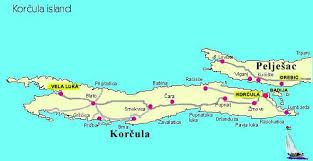
It’s clear, calm and perfect sailing weather, although in truth, while the Azimut and other vessels like her have masts, they never in fact, actually sail. That’s left to much smaller boats like the one in this picture.
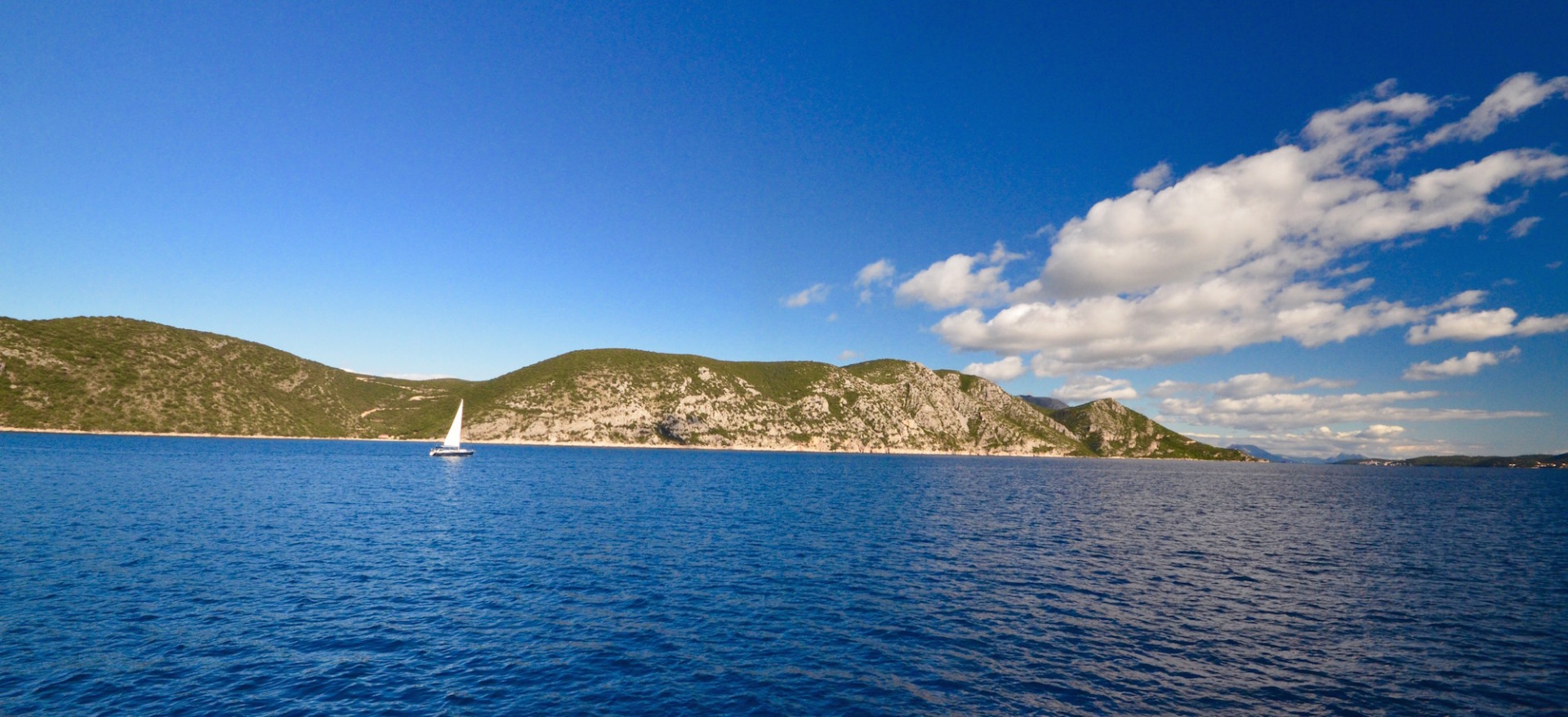
I can see that the town has a very distinct appearance as we get closer. It appears to be rise abruptly on a small promontory with a bell tower dominating the skyline and I can clearly make out walls and a massive tower. This is a neat looking place.
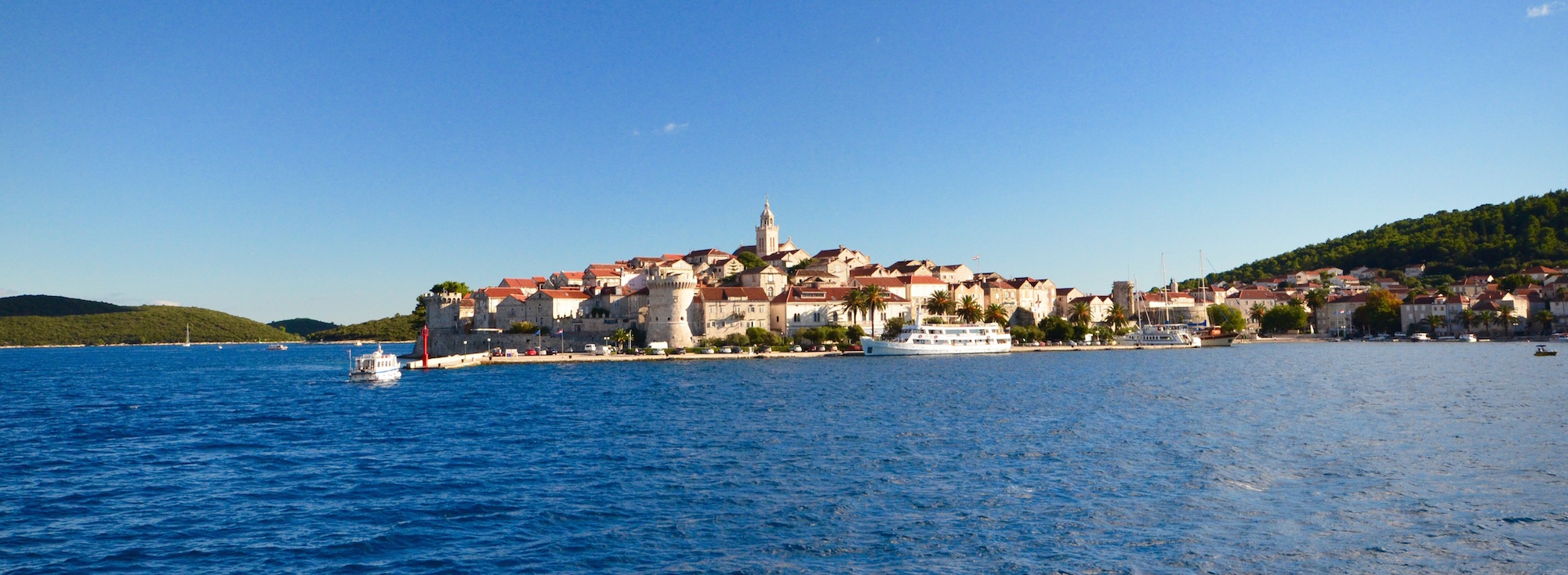
History of Korcula Town
The history of Korcula (pronounced Kor-chula) is extensive and dates back as far as the 6th century B.C. when Greek colonists from Corfu, also called Korkyra, founded the town and called it Korkyra Melaina or Black Corfu because of all the dark looking pine trees which are still in evidence today. If you believe in legend, Korcula is even older, being founded in 1250 B.C. by Antenor, one of the few senior Trojans who survived the sack of that city by the Greeks. What is here today is a city that largely dates from the period of Venetian dominance that lasted, off and on (mostly on) for almost 800 years. The oldest part of town is completely surrounded by high walls interspersed with a series of towers. It is what is inside these walls that is most interesting and we have a one hour guided tour coming up.
The Azimut moors literally right outside the walls of Korcula and we meet our guide on the promenade and make our way the short distance to the main entrance. As you can see from the map there is really only one main street with side streets running off of it and a street that almost encircles the town. It is the only one with car traffic – inside the walls it’s as peaceful and quiet as it must have been five hundred years ago. Our tour starts at 4 PM just as most of the tourists are departing to catch their buses back to wherever. Our guide is a pleasant middle-aged woman who speaks pretty good English.
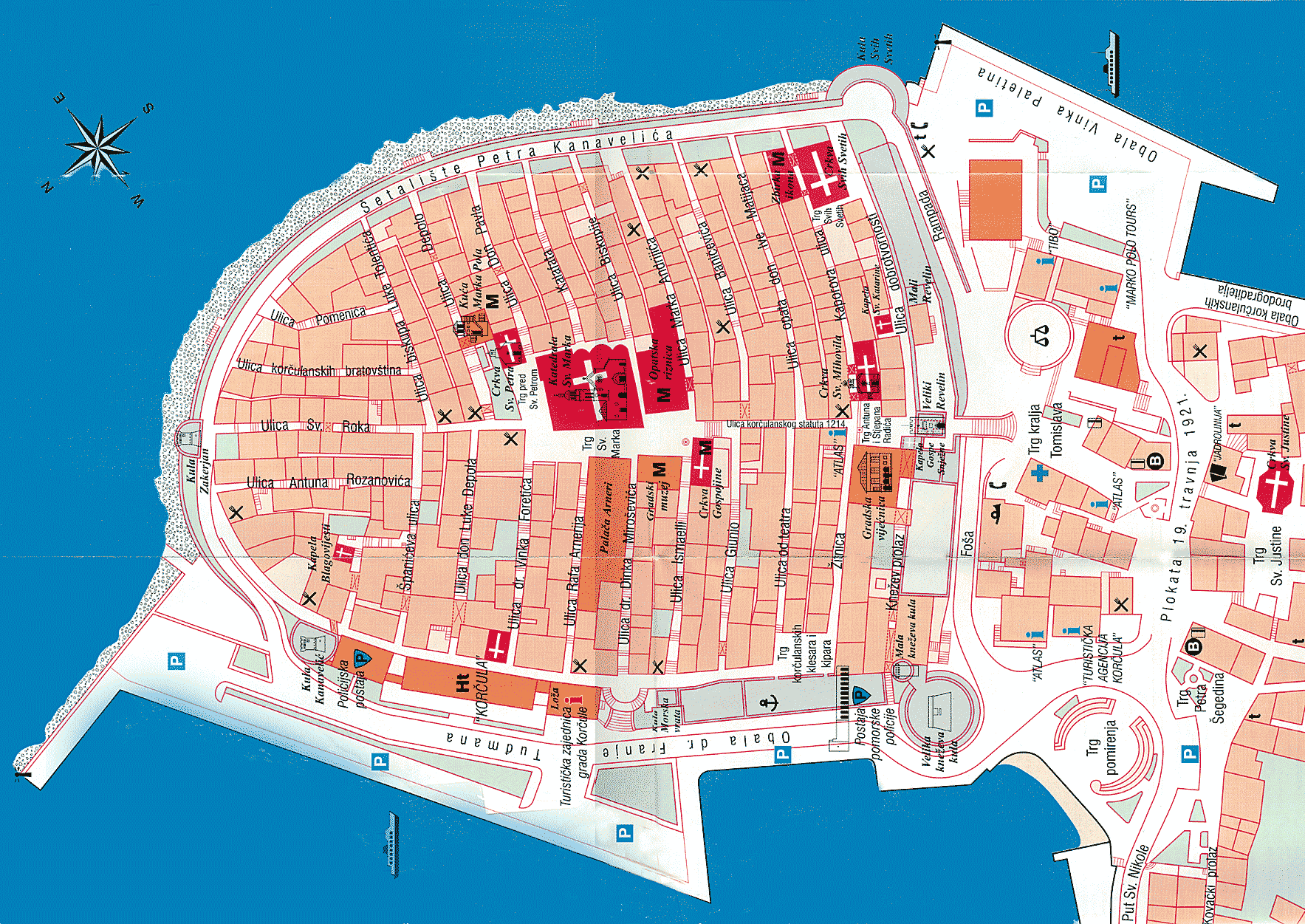
Here is the entrance to old Korcula. In older times the steps would have been over a moat.

This is the view from the inside which is a lot darker than from the outside.
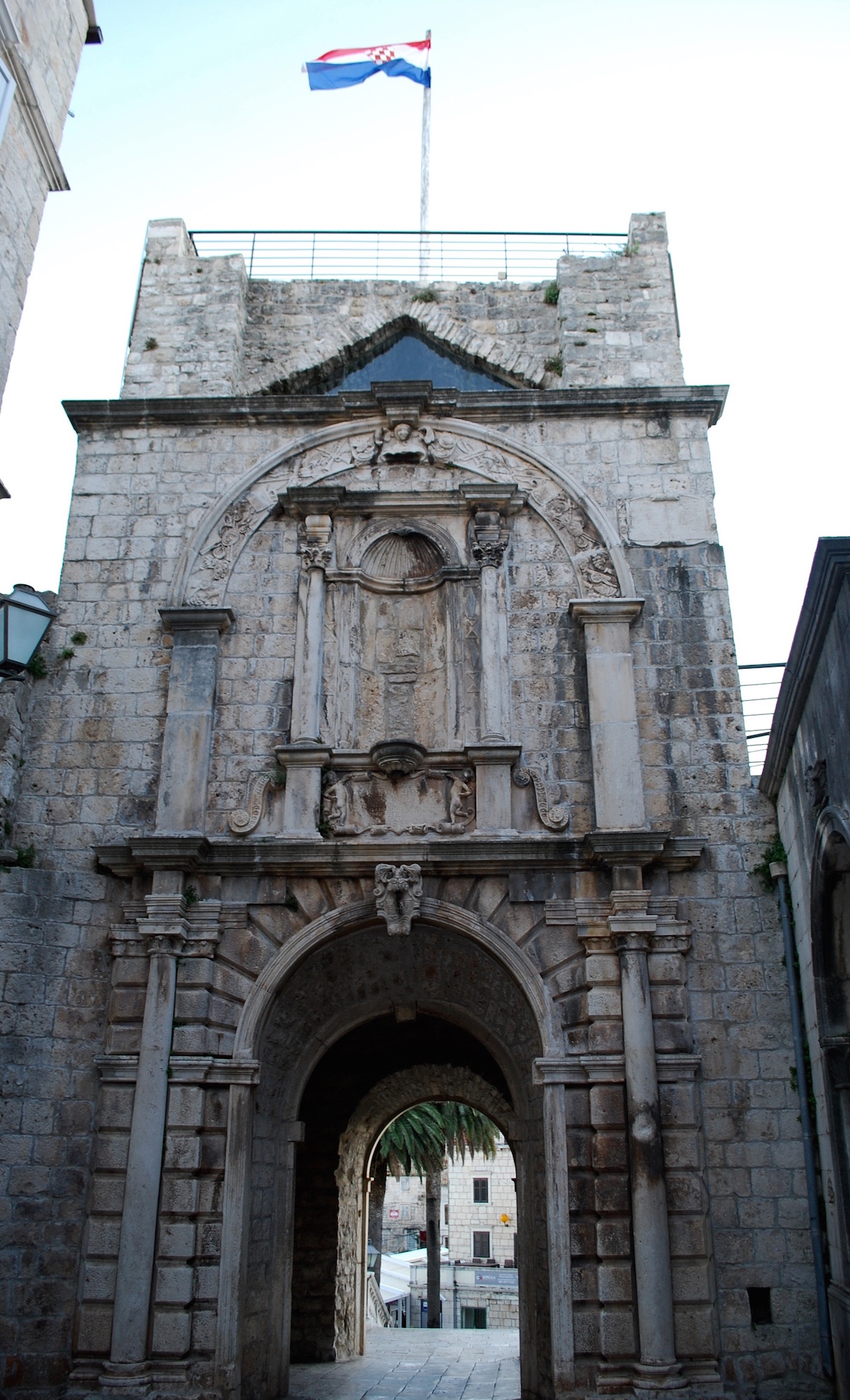
Our guide explains that the interior street pattern of Korcula is designed to make maximum effect of the summer and winter winds which blow in opposite directions. To the left the streets are straight allowing the summer wind, the maestral, to blow directly in to the main square and effectively ‘air condition’ the town. The streets to the right are more curved allowing them to take some of the sting out of the winter wind, the bura, coming down from the mainland mountains. Whatever the reason the side streets are as narrow as any you’ll find in Europe and for the most part still used as residential housing.
St. Mark’s Cathedral
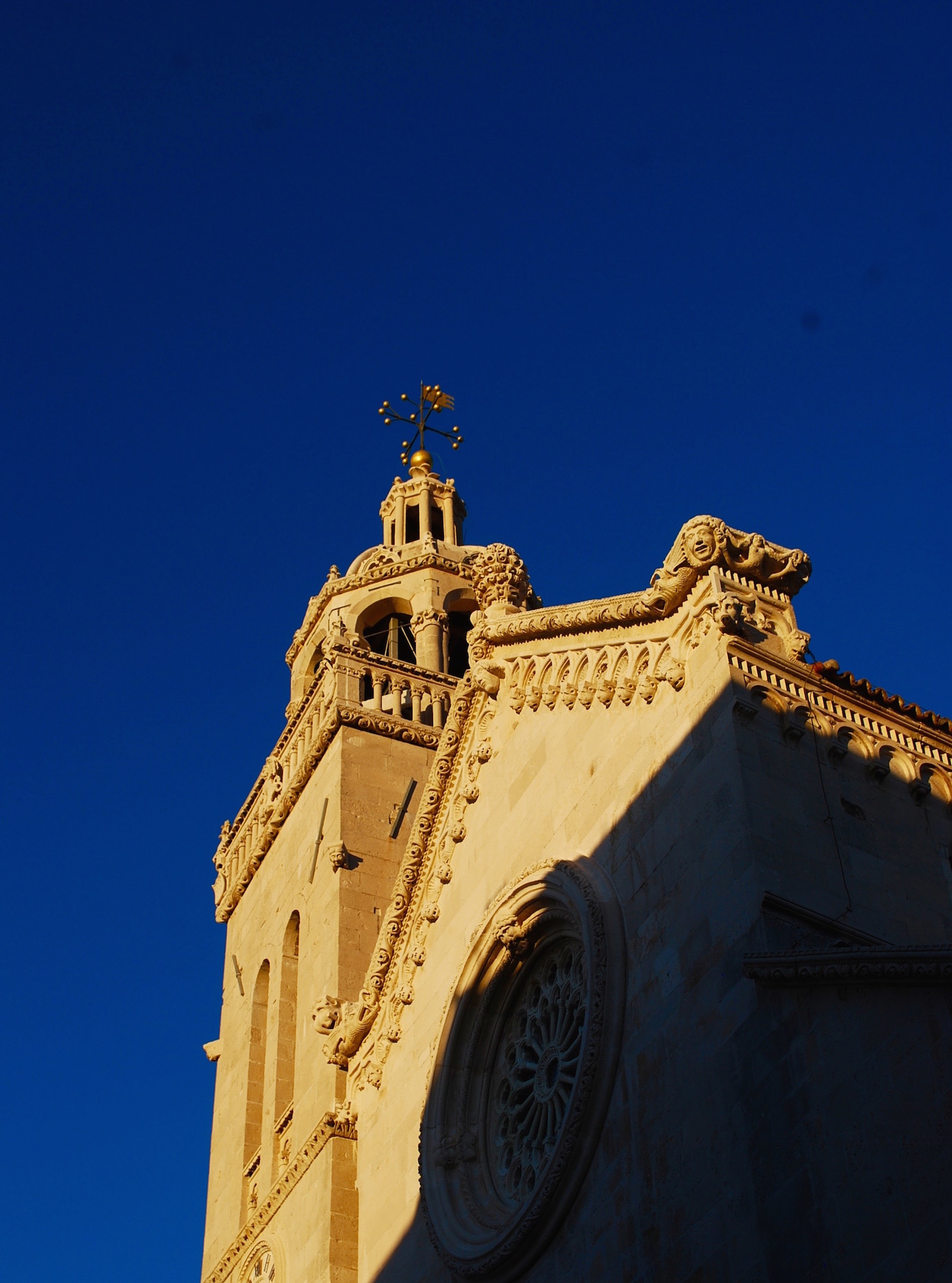
I can see the bell tower of St. Mark’s cathedral, the dominant building within the walls, bathed in light while all else is in shadow. It makes a good effect. Have a look at the face in the lower right hand corner.
It and others on the facade are another example of great Croatian stone sculpture which we have seen at Sibenik, Split, Trogir and now Korcula.
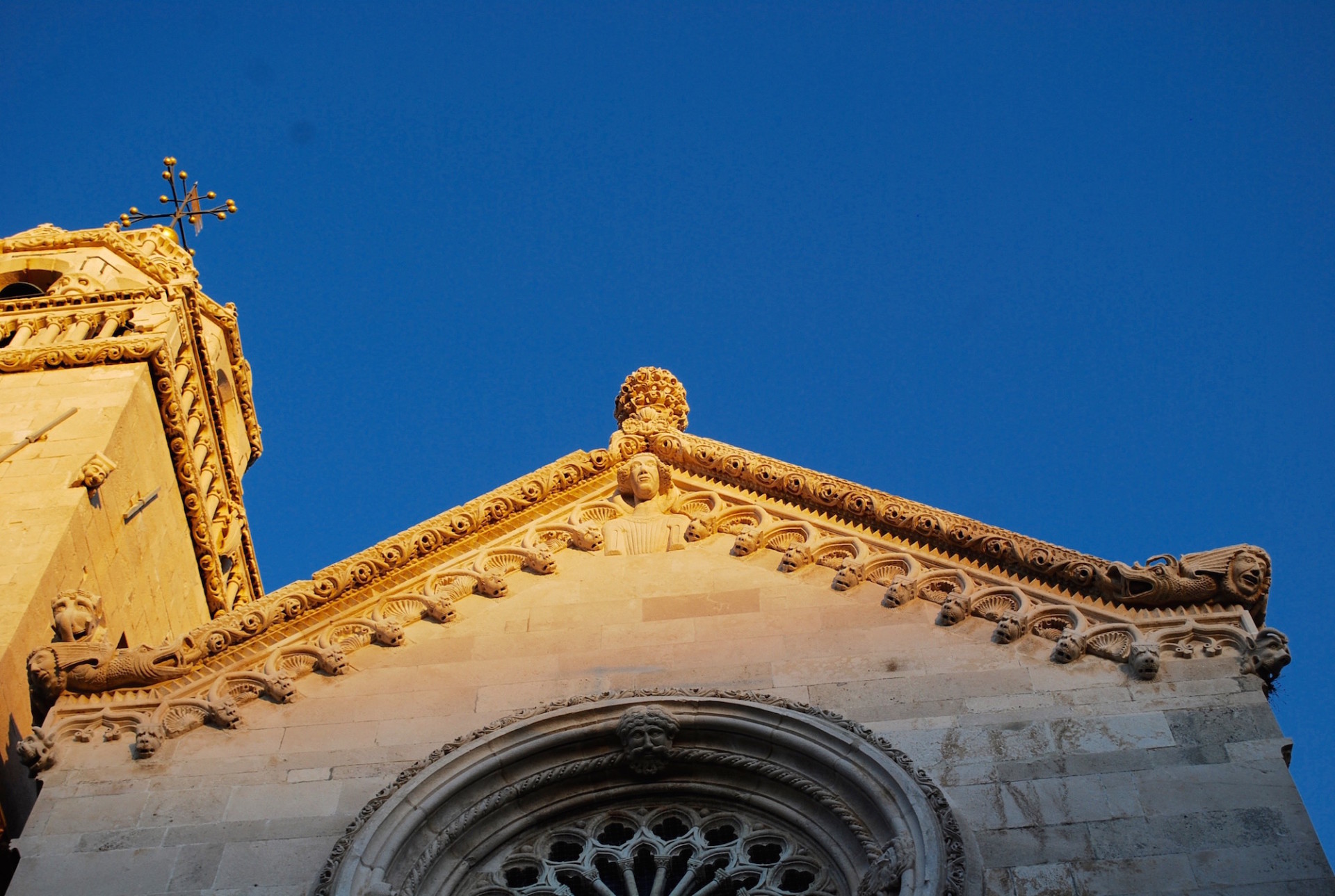
Here’s a close up.
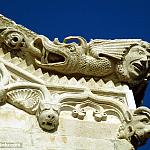
There are other features in this cathedral that seem to be common in Dalmatia including Adam and Eve and the pair of lions. In this case poor Adam, based on the look on his face and the position he’s in, looks like he’s trying to deal with a serious case of constipation. Funny or not, the quality of Croatian stone sculpture continues to amaze me.
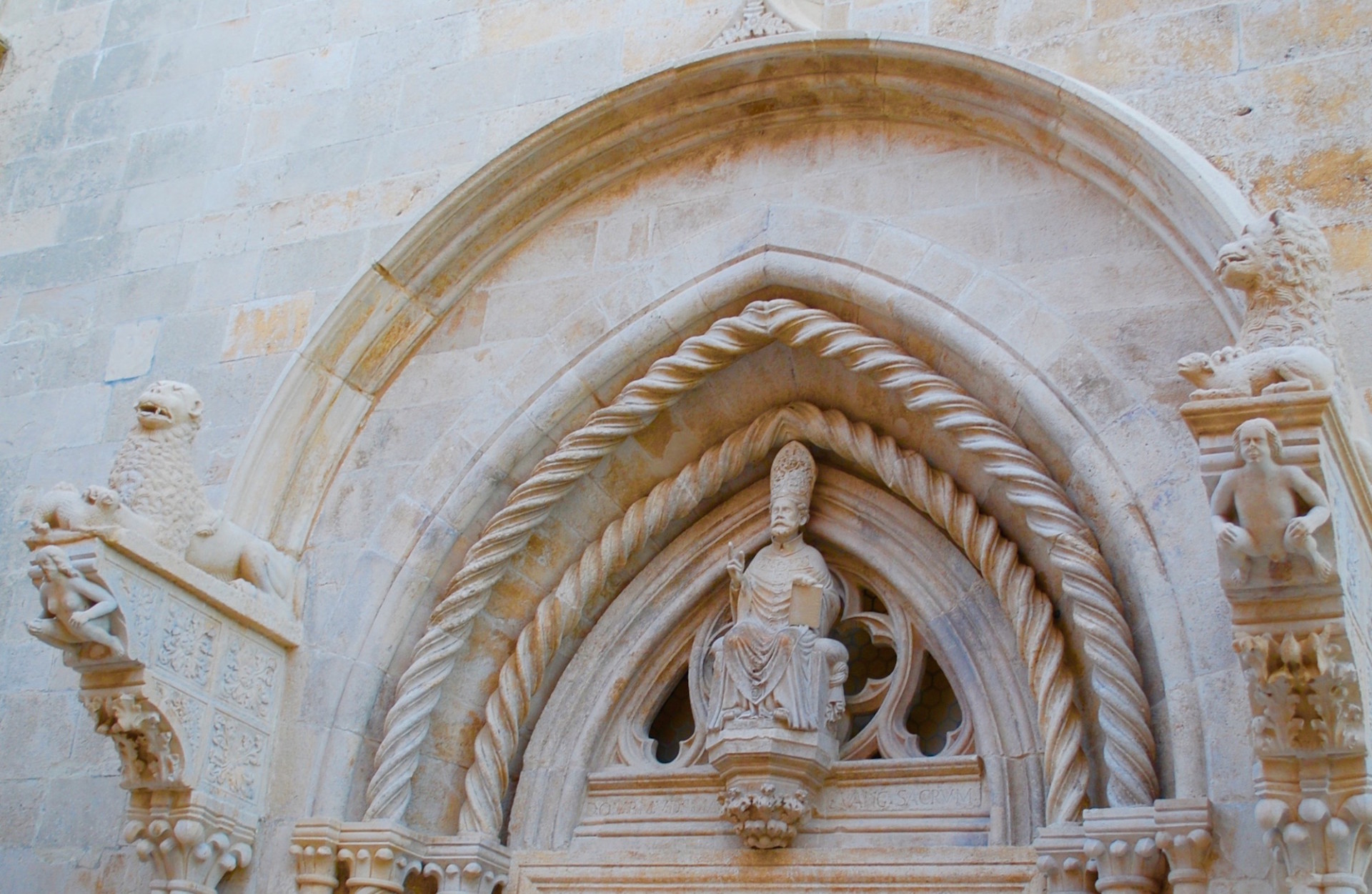
We only have time for a quick look inside because it’s almost closing time. Here I find this beautiful bronze sculpture of John the Baptist atop the baptismal fount, done in a style that definitely pays homage to the Greek kouros sculptures of more than two thousand years ago.
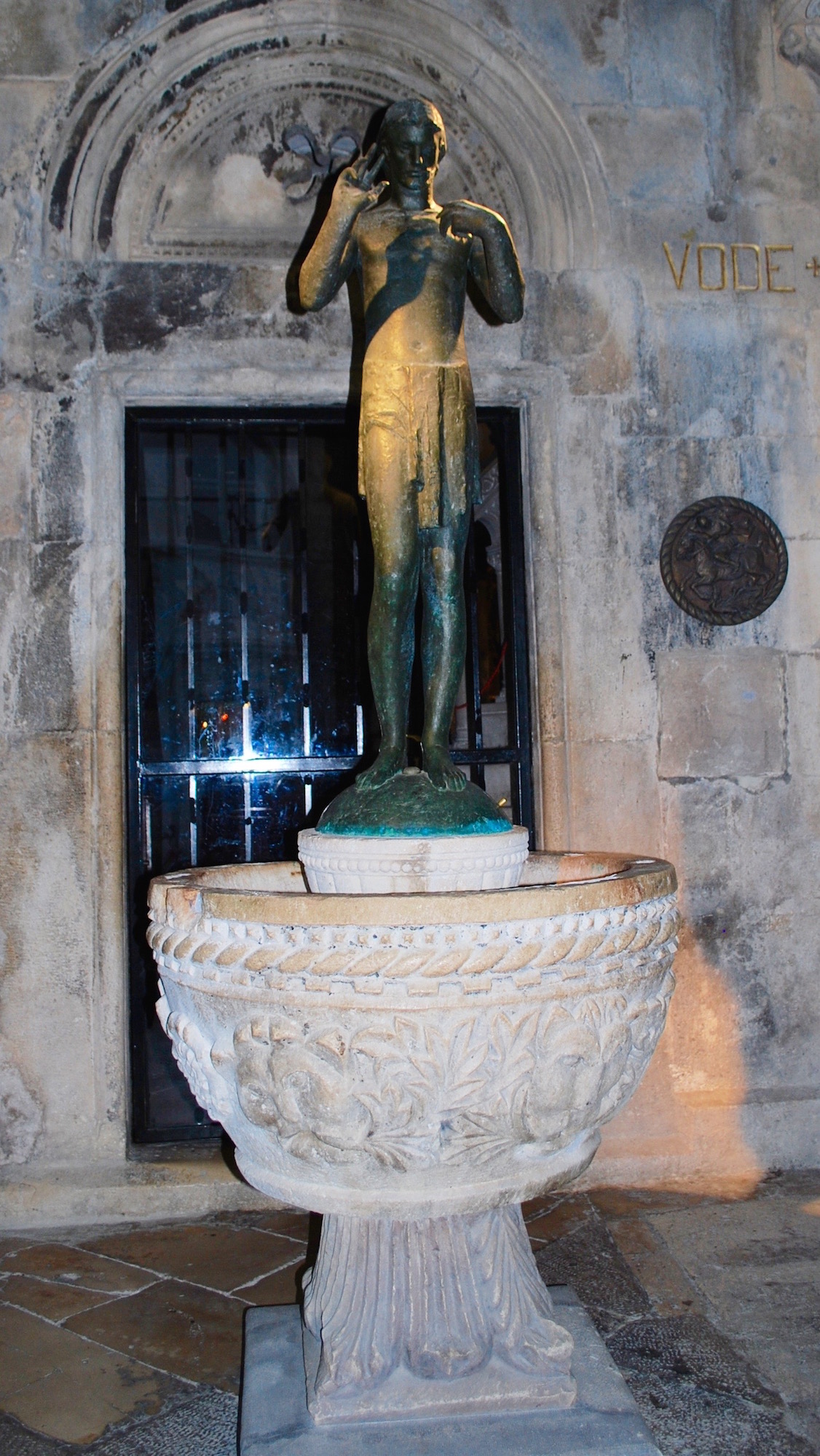
The Marco Polo Connection, Korcula
After the cathedral the most visited place in Korcula and certainly the most controversial was not open to the public during our visit. It is the alleged house of world famous traveler, raconteur and bullshitter, Marco Polo. It was under renovations to reopen as the Marco Polo museum which visitors today can pay to see. While historically even the Korcula tourism websites admit the claim that he was a native are speculative at best, as the guide noted, nobody can disprove that he was from Korcula. The old try to prove a negative trick – works every time. Certainly, based upon the amount of Marco Polo souvenirs in every store, he is doing more for them now than he ever did when alive.
At the end of the main Korcula street we came out to the Zakerjan tower which seems to have been cut in half. There’s a bar in here now – Massimo’s. You make you way to the top of the tower by way of a ladder. What’s neat about it is that the drinks are hoisted up to the top by a tray and pulley system. Fantastic view, but coming down could be problematic if you have one too many.
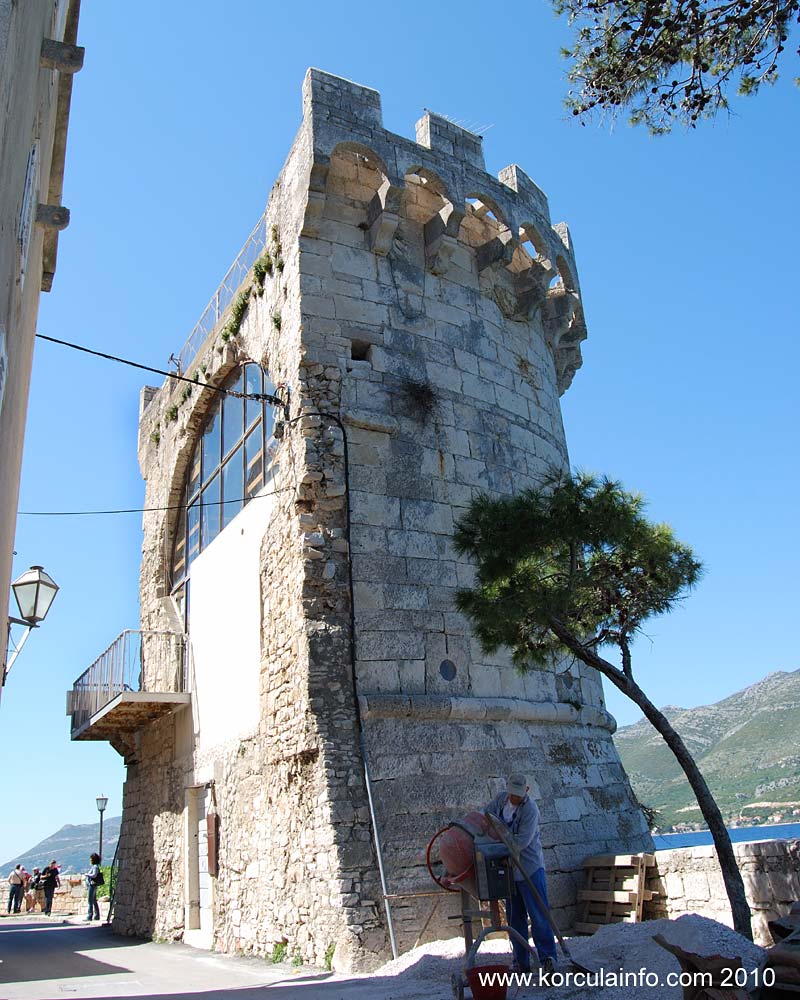
We said goodbye to our guide as we completed our tour back at the main entrance. I would have loved to have more time to explore the alleys of old Korcula, but by now they were in near darkness.
Cukarin Bakery, Korcula Town
Our penultimate stop was at one of Croatia’s most famous bakeries that I had read about on the internet. Cukarin has been around for a long time and is known for a tiny confection that reminded me of one of the PacMan ghosts. You can see them hanging in the window. It’s called a cukarin and is made only at this place. The owner was very genial and urged us to try different samples which had the desired effect of getting us to buy way more than we needed. Although the cukarins were good, the two types of roasted almonds they make here are so good that you just can’t stop eating them. It reminded me of the old Lay’s potato chip come on “Bet you can’t eat just one!” In this case it would be, “Bet you can’t just eat fifty!”.
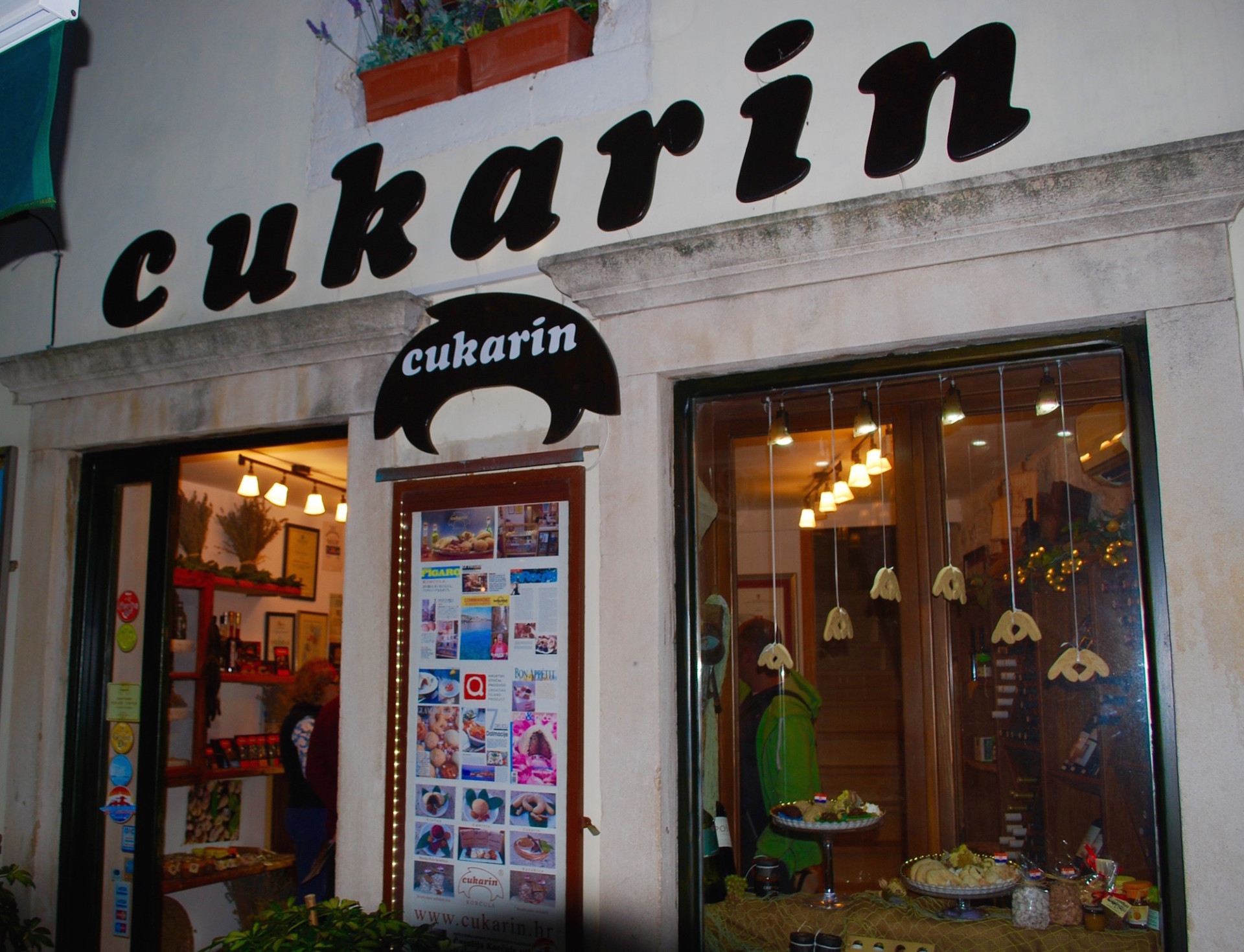
We took our comestibles next door to an outdoor cafe and ended out exploration of Korcula by sipping the wonderful Korculan wine made from the posip grape that is native to this island. From there it was a short walk through near deserted streets to our cabin on the Azimut.
Tomorrow we set out from Korcula town to explore the island by bike. Won’t you join us?
Here is a link to the Croatia photo gallery with pics from Split to Dubrovnik and all places in between.

